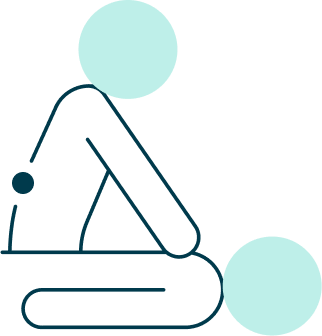Physiotherapy
The following is a series of physical therapy or physiotherapy techniques that we make available to the patient:

MANUAL THERAPY
What is it?
It is a set of techniques performed by the physiotherapist with his hands, aimed at treating dysfunctions of the musculoskeletal system through mobilizations, manipulations, stretching and massage therapy.
For which pathologies is it indicated?
-
Acute or chronic musculoskeletal pain
-
Muscle contractures and overloads
-
Joint problems (blockages, stiffness)
-
Cervical pain, back pain, lumbago, dorsalgia
-
Tension headaches
The procedure
The physiotherapist evaluates the dysfunction and applies the most appropriate techniques for each case. He/she may combine therapeutic massage, joint mobilization or myofascial release techniques, among others.
Efficiency
Very high, especially in the treatment of pain and improvement of mobility. It is a technique highly valued by both patients and professionals for its immediate and personalized effect.
ELECTROTHERAPY
What is it?
Electrotherapy is a technique that uses low intensity electrical currents for therapeutic purposes. There are different types of currents (TENS, EMS, interferential, galvanic…) that are applied according to the objective of the treatment.
For which pathologies is it indicated?
-
Acute or chronic pain (lumbalgias, cervicalgias, sciatica)
-
Muscle or ligament injuries
-
Neuromuscular rehabilitation
-
Postoperative recovery
-
Spasticity in neurological pathologies
The procedure
Electrodes are placed on the skin in the area to be treated. Through a device, the intensity, frequency and type of current is regulated according to the therapeutic indication. The duration of the session usually ranges between 15 and 30 minutes.
Efficiency
Scientific evidence supports its use for pain relief, especially in combination with other techniques. Its effectiveness depends on the correct choice of the type of current and the adequacy of the treatment to the patient’s pathology.
ULTRASOUND (ULTRASOUND THERAPY)
What is it?
It is a technique that uses high-frequency sound waves that penetrate deep tissues and produce a thermal and mechanical effect.
For which pathologies is it indicated?
-
Tendinitis and bursitis
-
Muscle injuries
-
Scars and adhesions
-
Contractures
-
Sprains
-
Plantar fasciitis
The procedure
A conductive gel is applied to the skin to facilitate the transmission of the waves and a head that emits the ultrasound is slid over the skin. It can be used in continuous mode (for thermal effect) or pulsed mode (for mechanical effect). Sessions usually last between 5 and 10 minutes per area.
Efficiency
Its efficacy is supported to improve healing and reduce inflammation in soft tissue injuries. However, its use should be individualized and it is not recommended as the only treatment technique.
CONVENTIONAL MAGNETOTHERAPY
What is it?
It is a technique that uses low frequency and high intensity magnetic fields to act on body tissues, especially at the bone and cellular level.
For which pathologies is it indicated?
-
Bone fractures and consolidation delays
-
Osteoporosis
-
Arthrosis
-
Bone edema
-
Chronic joint inflammation
The procedure
The patient is placed at rest and the area to be treated is placed inside an applicator or coil that generates the magnetic field. No heat or vibration is perceived during the treatment. Sessions can last between 20 and 40 minutes.
Efficiency
It has good results in bone regeneration processes and reduction of inflammation. It is especially indicated in chronic processes. Scientific literature supports its use as a complementary treatment.
SHORT WAVES
What is it?
It is a form of diathermy that uses high frequency electromagnetic waves (27.12 MHz) to heat deep tissues, with a therapeutic objective.
For which pathologies is it indicated?
-
Arthrosis and arthritis
-
Tendinitis
-
Muscle injuries
-
Chronic pain
-
Inflammatory processes
The procedure
Capacitive or inductive electrodes are placed on the area to be treated, without direct contact with the skin. The treatment generates a deep tissue heating, improving circulation and relaxing the muscles. Sessions usually last between 15 and 30 minutes.
Efficiency
It is effective in relieving pain and reducing inflammation in chronic processes. It is often used as part of a combined treatment with other physiotherapeutic techniques.

Our customers say
Insurance companies
Ask your MIVI centre for information on the agreements with insurance companies.










